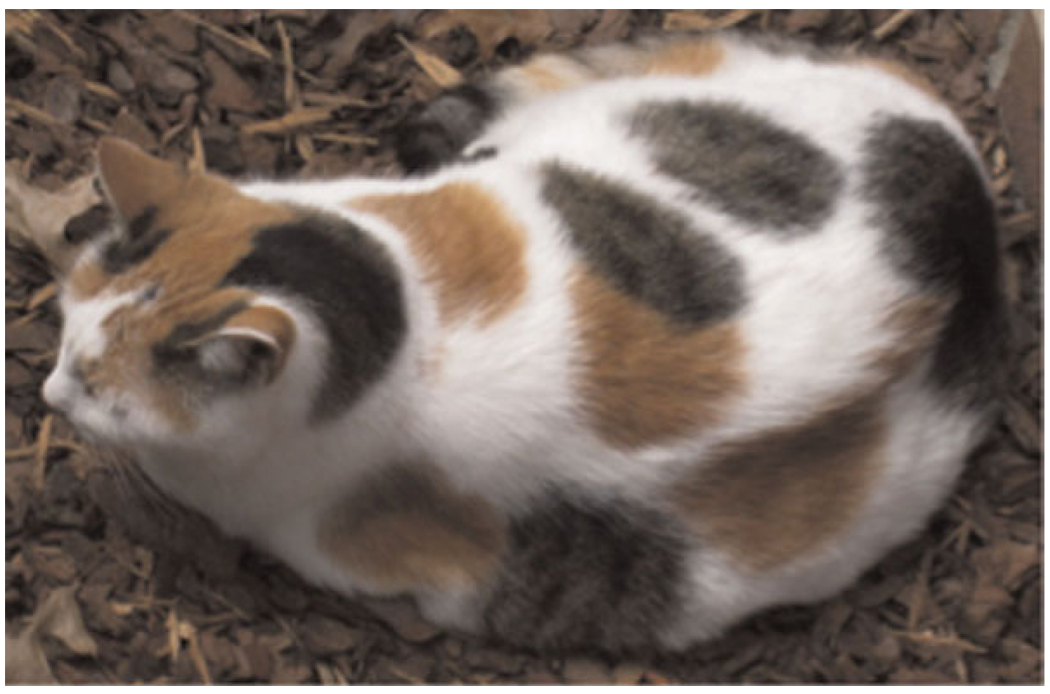Fig. 1.
The mosaic coat color of the calico cat exemplifies X-chromosome inactivation (Lyon, 1961). Calico cats are almost exclusively female and comprise of two colors of fur, black and orange, on an otherwise white background. The black and orange patches are due to mutually exclusive expression of two different alleles of the same X chromosome-linked gene. In fact, in the alternating patches, genes along only one of the two Xs are active while most genes on the other X-chromosome are inactive. The discreteness of the patches is due to clonal expansion of melanocytes whose precursors had inactivated one or the other X-chromosome during embryogenesis; the patches therefore reflect the epigenetic stability of X-inactivation.

